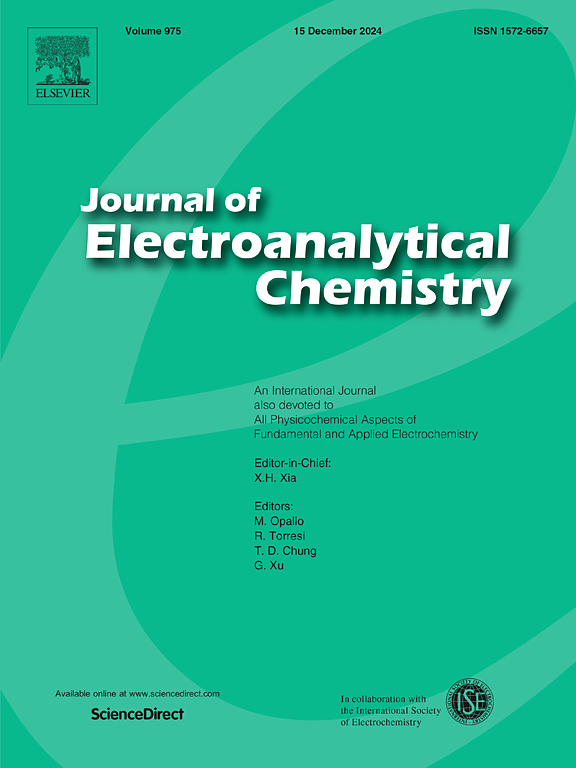A bifunctional CoNi alloy for electrocatalytically coupled cathodic nitrate reduction and anodic HPAM oxidation
IF 4.1
3区 化学
Q1 CHEMISTRY, ANALYTICAL
引用次数: 0
Abstract
The construction of electrocatalytic cathodic nitrate reduction and anodic polyacrylamide (HPAM) oxidation reactions is a promising new electrocatalytic reaction system, which promises simultaneous ammonia synthesis and HPAM degradation. Here, we synthesised an N-doped C nanotube-encapsulated CoNi nano-alloy and used it for electrocatalytic NO3− reduction and HPAM oxidation reactions. Therein, CoNi-0.5 could achieve the maximum ammonia yield and Faraday efficiency of 5516.73 ± 66.07 μg h−1 mgcat−1 and 94.71 ± 1.21 %, respectively. Meanwhile, the maximum degradation rate of HPAM was 73.02 ± 1.16 % at 2 h. By In-situ ATR-SEIRAS, in-situ DEMS demonstrated that *NOH is an important reaction intermediate in the ammonia synthesis process, and the bimetallic CoNi alloy can effectively reduce the reaction energy barrier for NO3− reduction. This work presents a new strategy for constructing a coupled system for electrocatalytic NO3− reduction.

求助全文
约1分钟内获得全文
求助全文
来源期刊
CiteScore
7.80
自引率
6.70%
发文量
912
审稿时长
2.4 months
期刊介绍:
The Journal of Electroanalytical Chemistry is the foremost international journal devoted to the interdisciplinary subject of electrochemistry in all its aspects, theoretical as well as applied.
Electrochemistry is a wide ranging area that is in a state of continuous evolution. Rather than compiling a long list of topics covered by the Journal, the editors would like to draw particular attention to the key issues of novelty, topicality and quality. Papers should present new and interesting electrochemical science in a way that is accessible to the reader. The presentation and discussion should be at a level that is consistent with the international status of the Journal. Reports describing the application of well-established techniques to problems that are essentially technical will not be accepted. Similarly, papers that report observations but fail to provide adequate interpretation will be rejected by the Editors. Papers dealing with technical electrochemistry should be submitted to other specialist journals unless the authors can show that their work provides substantially new insights into electrochemical processes.

 求助内容:
求助内容: 应助结果提醒方式:
应助结果提醒方式:


